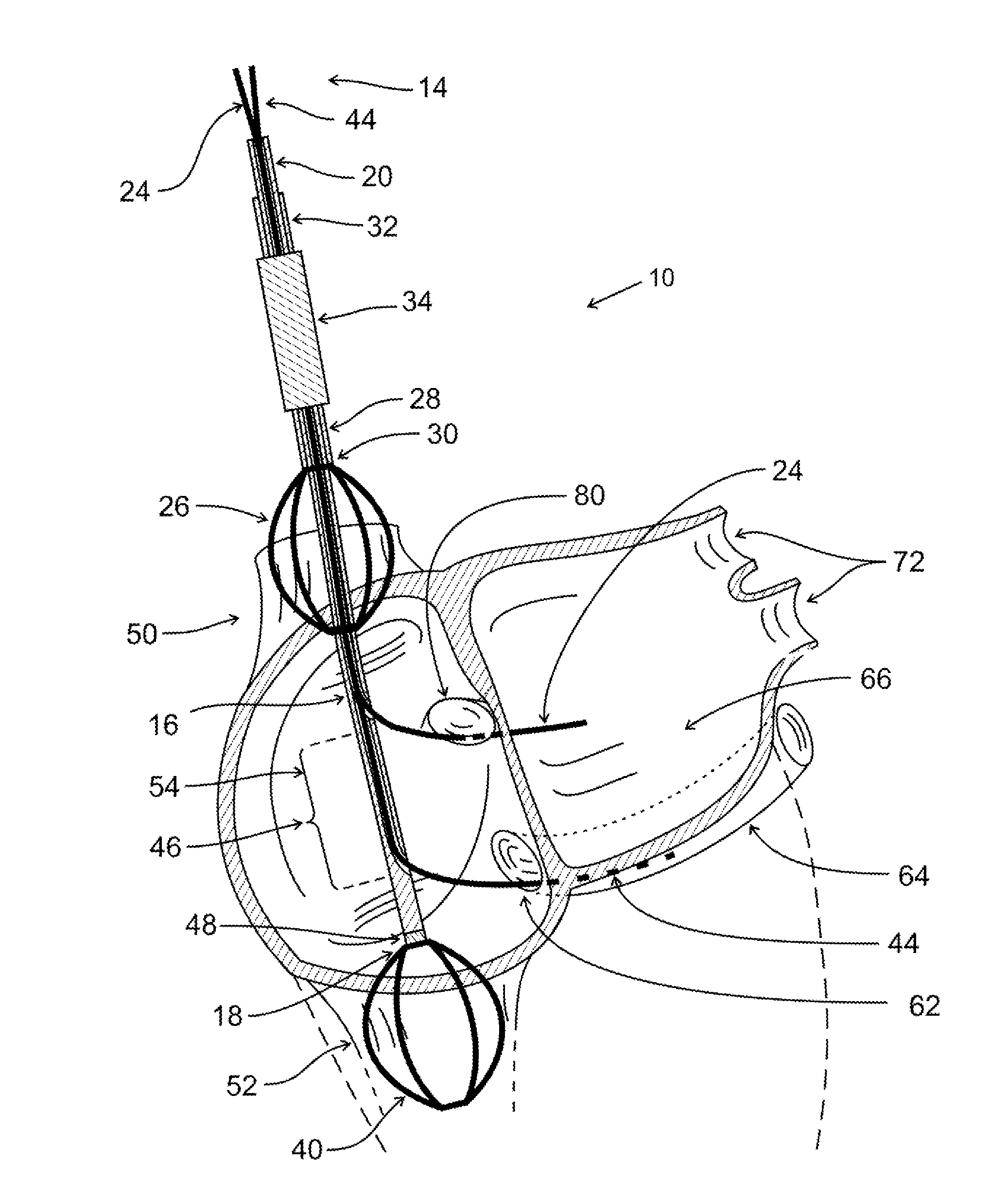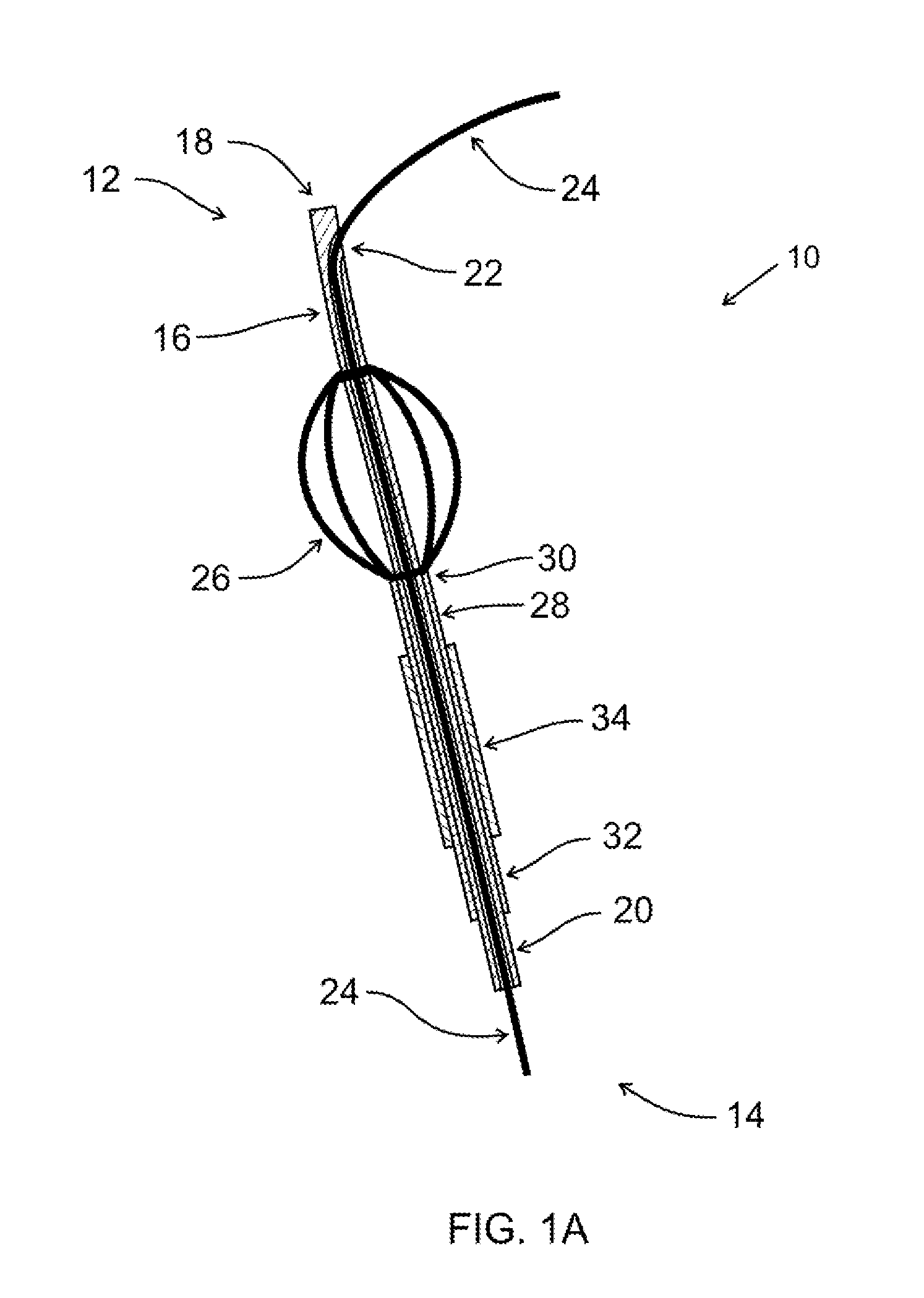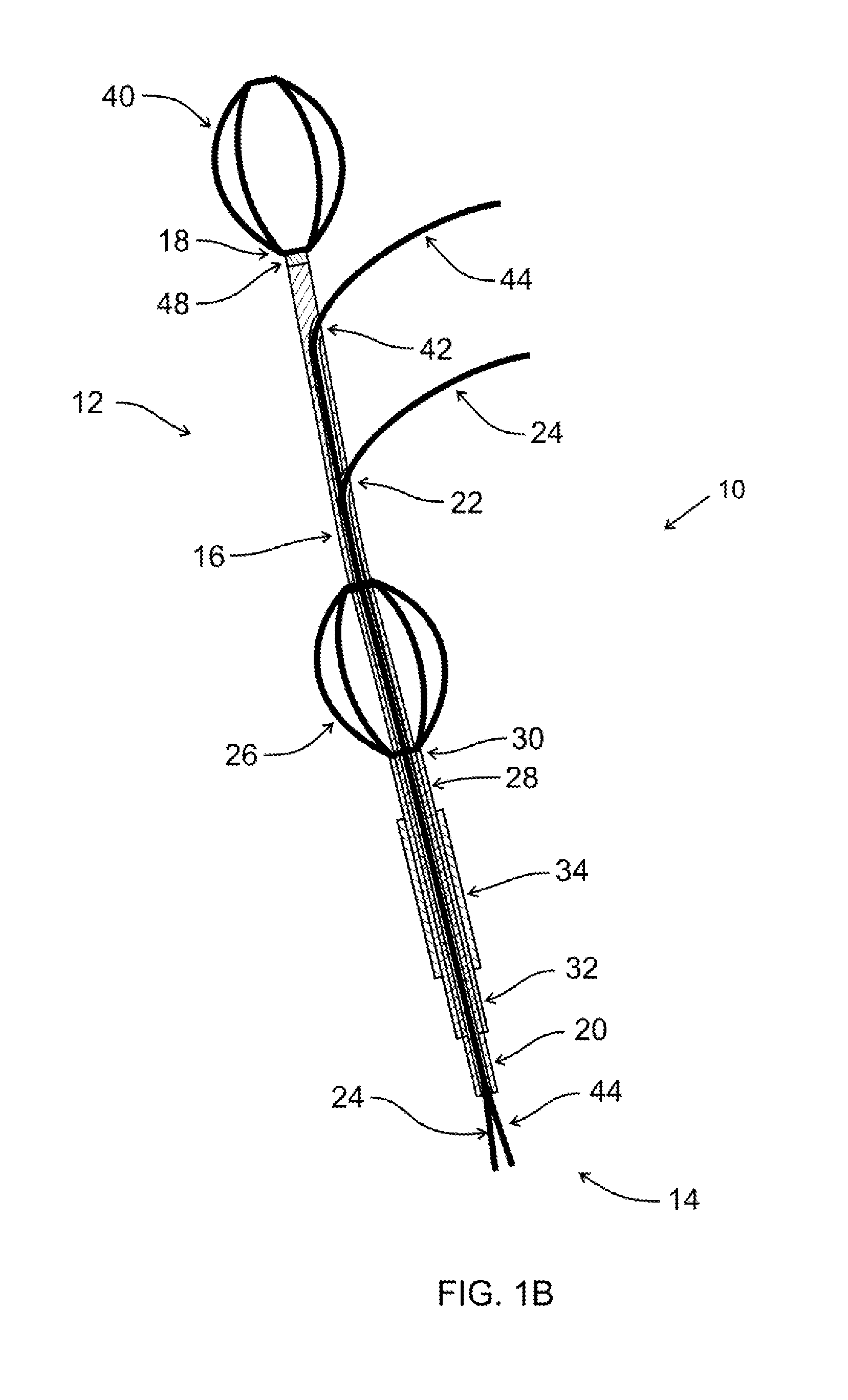Cardiac Access Catheter, System, and Method
a catheter and access technology, applied in the field of medical devices, can solve the problems of difficult or impossible access, difficult or impossible navigation to access the desired anatomical location, and expensive or complicated equipment and procedures, and achieve the effects of improving delivery, superior approach, and improving alignment with the axis
- Summary
- Abstract
- Description
- Claims
- Application Information
AI Technical Summary
Benefits of technology
Problems solved by technology
Method used
Image
Examples
Embodiment Construction
[0054]It is desired to direct a device to specific tissues and locations within the body to facilitate diagnosis, monitoring, treatment, or excision procedures in the body. While access to some tissues and locations is relatively simple, certain locations are difficult to access, with sufficient safety, ease, and reliability. This is especially true when it is desired to approach the tissues or locations in a less-invasive or minimally-invasive manner, as opposed to a more-invasive conventional surgical approach. For example, endoscopic, or catheter-based diagnosis and therapy, including percutaneous vascular approaches, are preferred when they can be performed safely and effectively.
[0055]It is particularly desirable to access portions of the heart and nearby structures from a percutaneous approach via a remote blood vessel. For example, it is desired to access left heart structures via transvenous routes, such as an inferior route from a femoral venous access, for example, or a su...
PUM
 Login to View More
Login to View More Abstract
Description
Claims
Application Information
 Login to View More
Login to View More - R&D
- Intellectual Property
- Life Sciences
- Materials
- Tech Scout
- Unparalleled Data Quality
- Higher Quality Content
- 60% Fewer Hallucinations
Browse by: Latest US Patents, China's latest patents, Technical Efficacy Thesaurus, Application Domain, Technology Topic, Popular Technical Reports.
© 2025 PatSnap. All rights reserved.Legal|Privacy policy|Modern Slavery Act Transparency Statement|Sitemap|About US| Contact US: help@patsnap.com



